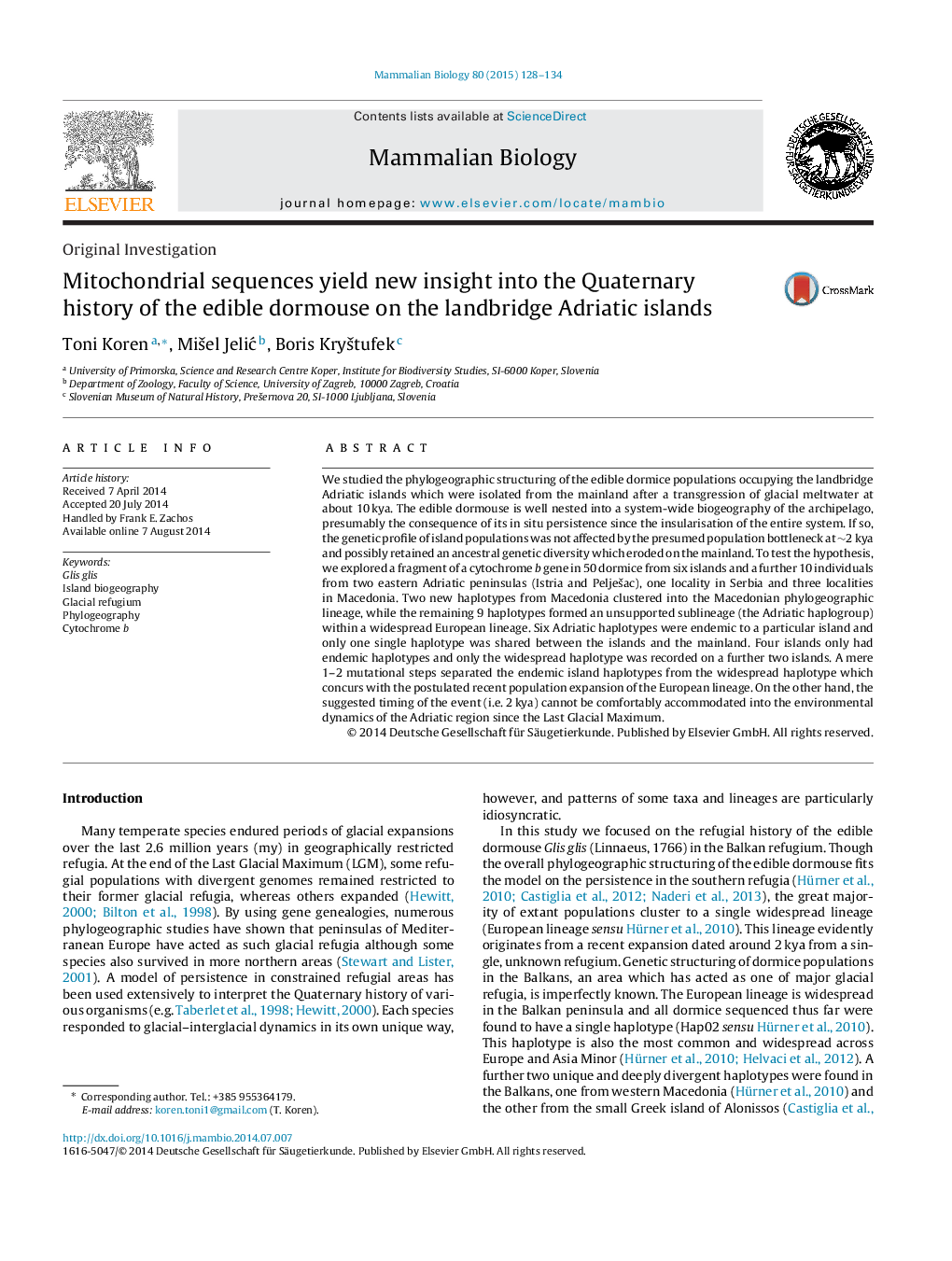| کد مقاله | کد نشریه | سال انتشار | مقاله انگلیسی | نسخه تمام متن |
|---|---|---|---|---|
| 2193604 | 1098387 | 2015 | 7 صفحه PDF | دانلود رایگان |
We studied the phylogeographic structuring of the edible dormice populations occupying the landbridge Adriatic islands which were isolated from the mainland after a transgression of glacial meltwater at about 10 kya. The edible dormouse is well nested into a system-wide biogeography of the archipelago, presumably the consequence of its in situ persistence since the insularisation of the entire system. If so, the genetic profile of island populations was not affected by the presumed population bottleneck at ∼2 kya and possibly retained an ancestral genetic diversity which eroded on the mainland. To test the hypothesis, we explored a fragment of a cytochrome b gene in 50 dormice from six islands and a further 10 individuals from two eastern Adriatic peninsulas (Istria and Pelješac), one locality in Serbia and three localities in Macedonia. Two new haplotypes from Macedonia clustered into the Macedonian phylogeographic lineage, while the remaining 9 haplotypes formed an unsupported sublineage (the Adriatic haplogroup) within a widespread European lineage. Six Adriatic haplotypes were endemic to a particular island and only one single haplotype was shared between the islands and the mainland. Four islands only had endemic haplotypes and only the widespread haplotype was recorded on a further two islands. A mere 1–2 mutational steps separated the endemic island haplotypes from the widespread haplotype which concurs with the postulated recent population expansion of the European lineage. On the other hand, the suggested timing of the event (i.e. 2 kya) cannot be comfortably accommodated into the environmental dynamics of the Adriatic region since the Last Glacial Maximum.
Journal: Mammalian Biology - Zeitschrift für Säugetierkunde - Volume 80, Issue 2, March 2015, Pages 128–134
